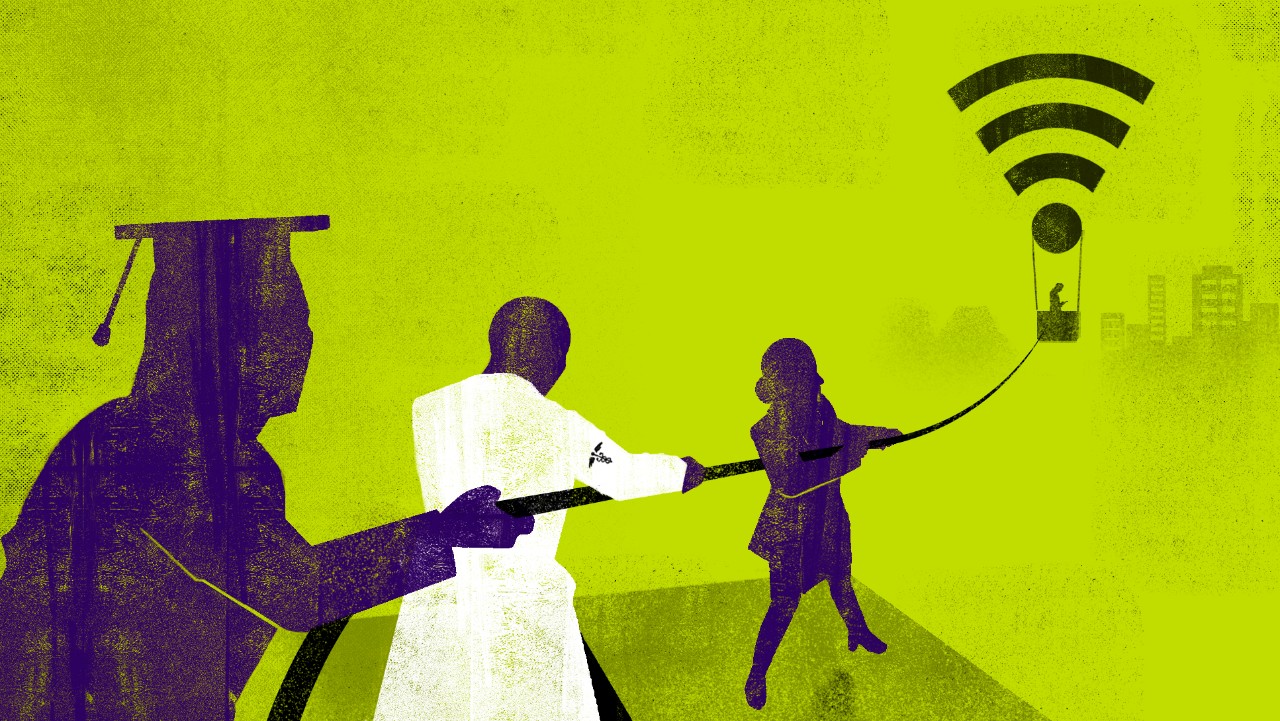As coronavirus has forced us to shelter in place, home internet access has become as indispensable as electricity. Billions of people globally now rely on it for work, school, healthcare, and other basic needs, yet a significant portion don’t have access or the proper training to be effective digital citizens and workers.
The pandemic also has encouraged a new breed of company, with a clearer sense of purpose. The most agile have pivoted to different ways of operating, whether that’s remote work or product offerings like telehealth, delivery services, or protective equipment. Leading organizations also are focusing on broader environmental, social, and governance metrics.
For many of these outfits, working toward the greater good is also good for business. Providing technology, devices, and training to help close the digital divide can buff a brand’s reputation. Even more important at a time when companies are racing to digitize their operations, such efforts promise to nurture a wider talent pool and to broaden the market for their goods and services. Today’s edition of Ready or Not, from the Oliver Wyman Forum, looks at how businesses are stepping into the digital divide.
While more than four billion people have internet access – often via smartphones – almost half the world’s population has no access four years after the United Nations declared it a human right. The gap exists even in wealthier nations: Nearly 20 percent of 18- to 24-year-olds do not have access to high speed internet, according to a recent seven-nation survey by the Oliver Wyman Forum. A quarter didn’t have the tools necessary to work remotely, and 13 percent didn’t have what they needed to attend school remotely – both necessities during coronavirus.
In the United States, 28 percent of Americans in rural areas do not have access or cannot afford broadband. The problem persists in cities, especially Black, Latino, and low-income communities, many of which also have been disproportionately impacted by COVID-19. Nationwide, about 12 million children do not have the broadband internet they need to attend virtual classes.
Who's Using Digital Services Post-COVID
The percentage of respondents who say they'll continue using online services after lockdown orders end.
Access isn’t the only challenge. Lockdown measures have forced many companies to recognize that their employees and clients lack digital skills and necessary equipment. The European Union estimates that nine out of 10 jobs in the future will require digital skills, but more than 40 percent of European residents were unable in 2019 to perform basic digital tasks such as making a Wi-Fi connection or using a website, according to a report from the European Commission. A recent survey by a major British bank found that 52 percent of workers in the United Kingdom lacked the digital skills needed in the workplace. And nearly five percent of the workforce has only the bare minimum skills to get online.
A decade ago, that may have been tenable. But as society gets ever more digital, those without skills and access risk falling even further behind, worsening inequality and hurting the economy for all of us. Many people are expecting to use the internet more after coronavirus for work, school, shopping, and healthcare, according to a recent Forum survey of 6,000 people in eight countries. In the US, for example, 57 percent of employees are working remotely more or for the first time, and nearly two-thirds of them plan to continue doing so post-COVID-19.
The pandemic, social unrest, and growing pressure from investors and employees have persuaded leading organizations to reassess their goals and focus on “values” as well as profits. In recent months, companies around the globe have helped their communities as well as their bottom line and future employees. They have forged partnerships to provide digital training and the necessary funding, devices, and Wi-Fi to expand internet access. A major telecom company, for example, is working with San Jose to provide 11,000 internet hotspots and 4G LTE data plans to students and low-income households. About 95,000 residents in the Silicon Valley community lack access to broadband, including 36 percent of Latino families and 47 percent of Black families.
Similarly, an Indian telecommunications company is partnering with a tech firm to roll out digital literacy programs for first-time internet users. Some 300 million people will receive weekly training sessions, with information about apps and internet safety, with the tech firm overseeing the educational content.
The European Commission’s Digital Skills and Jobs Coalition boasts more than 400 members, many of whom are firms pledging to create new partnerships, fund digital skills training, and raise awareness among workers about the need of digital skills training.
In collaboration with the London Data Commission, the Oliver Wyman Forum is pioneering an approach to using private-sector data to map the demand for digital skills in the UK capital. The project uses data to identify London boroughs that suffer from poor internet connectivity and the lowest digital skills. That information will be used by the Greater London Authority to decide where to prioritize training and inclusion efforts.
Solving the crisis will require more such initiatives, creativity, and public-private partnerships, but the prize is well worth the effort. Some estimate that increasing internet access by just 10 percent in developing nations is correlated with a 1.3 percent increase in Gross Domestic Product. In the US, other estimates claim that a 10 percentage point increase in broadband access may raise per capita GDP by more than $13,000, or 25 percent, and that every broadband-related job can create up to four additional jobs.
Unleashing that potential is good for business, and society. Time to get to work.
US Naval War College professor, author, and veteran |
"We need to change the messaging around diversity and inclusion. Every time we call it a women's initiative, the guys hear that and check out."

